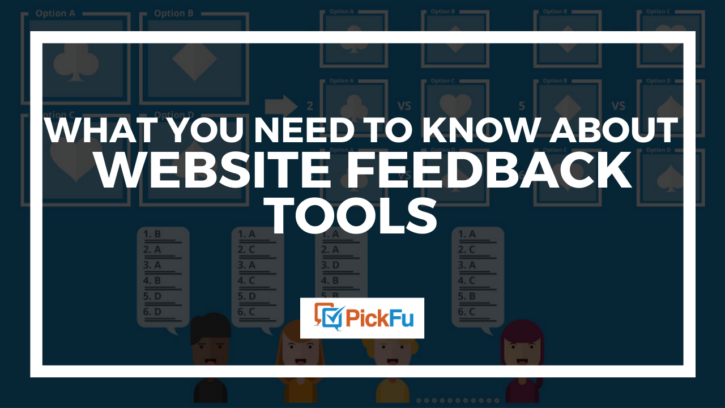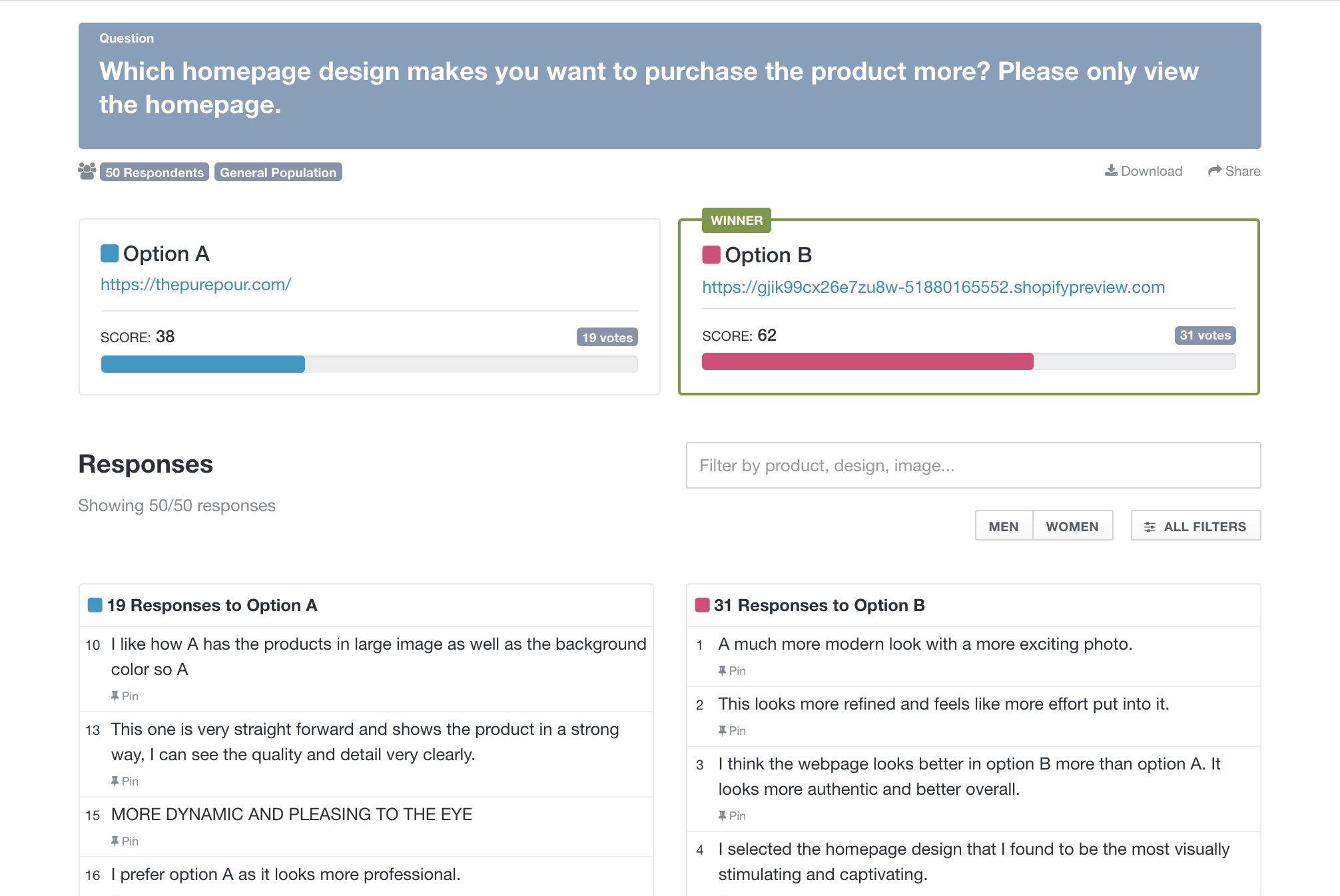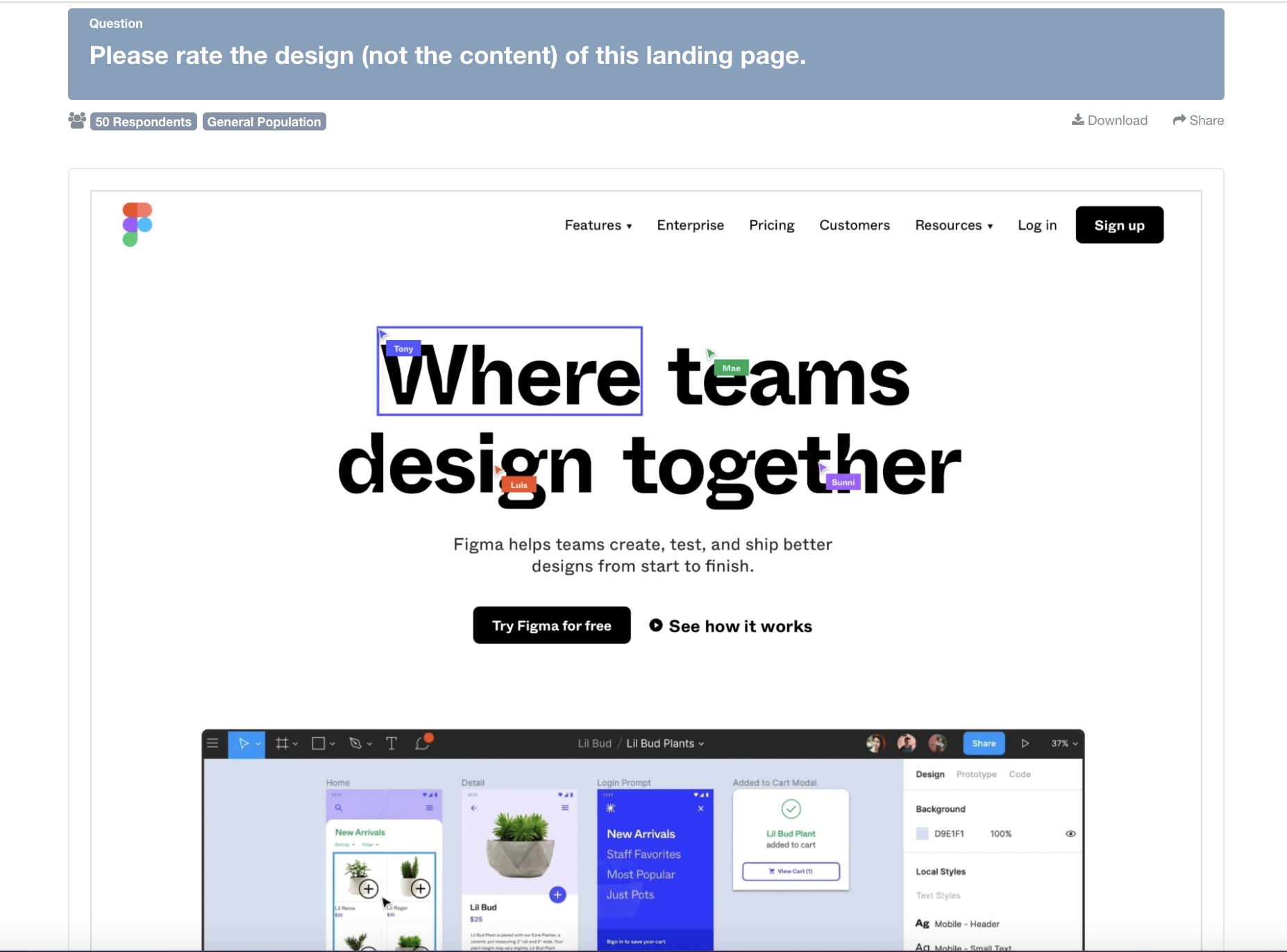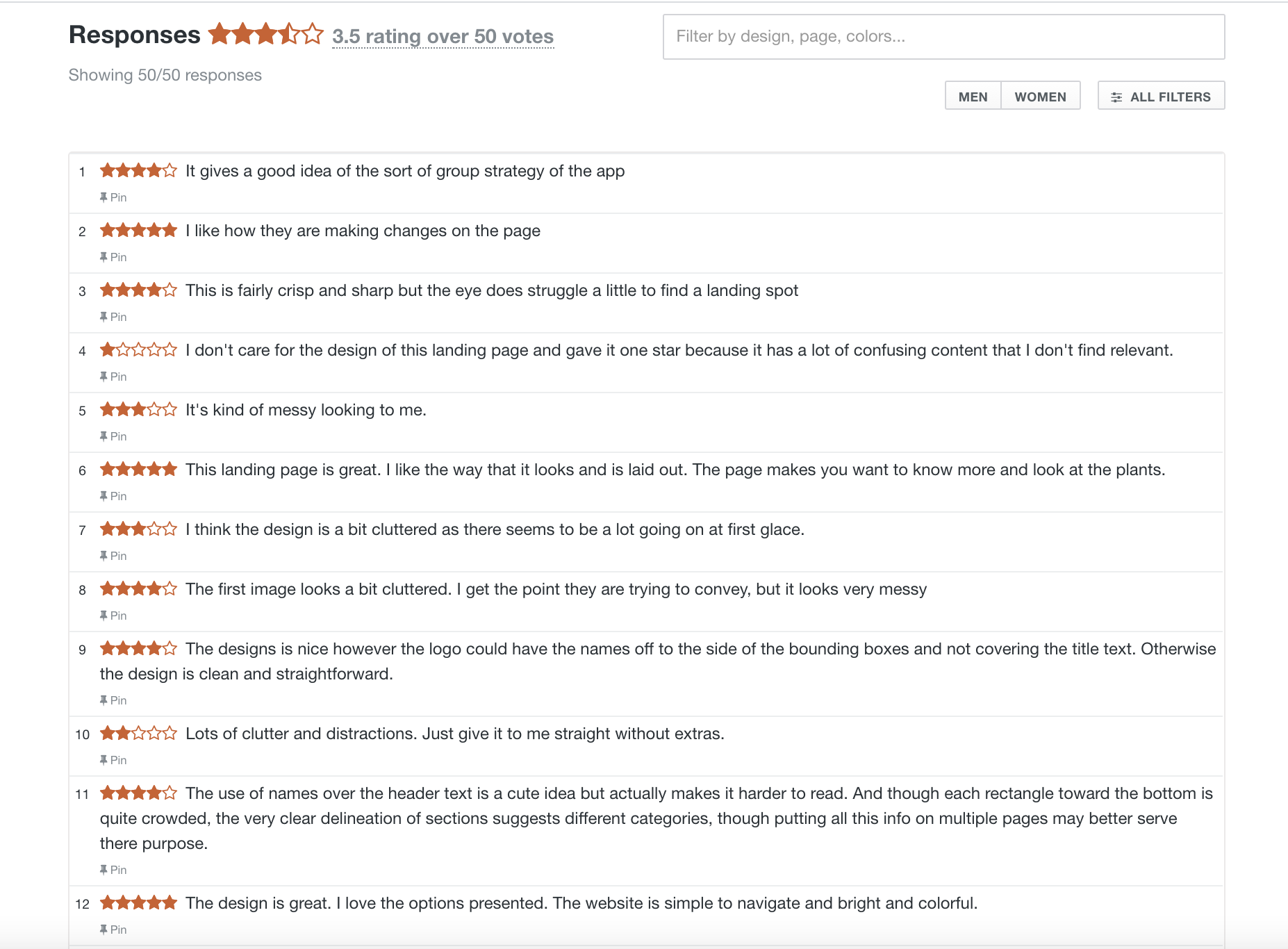There’s more to a website than big pictures, flashy videos, bright colors, and lots of copy. In fact, a website can have all those things and still fall flat.
From a consumer perspective, a great website should offer a satisfying user experience. From a business perspective, it should encourage customers to take the next step in their journey, whether that’s clicking through to another page, requesting a demo of your service, or placing a product in their shopping cart.
But how do you know if your website is grabbing and holding the interest of your target market? That’s where website feedback tools come in.
In this article, we’ll discuss what a website feedback tool is and why you need one.
What is a website feedback tool?
A website feedback tool helps you understand what visitors think of your site and what is and isn’t resonating with them. It differs from an analytics tool such as Google Analytics or Adobe Analytics in that it goes further — digging into the design, functionality, usability, readability, and ease of use of your site.
Website feedback tools vs. analytics tools
Analytics tools are table stakes. They tell you the basics, such as the amount of traffic to your website and specific pages, which pages are most popular with your audience, and how long visitors spend on certain pages.
This is critical information for you to know. And it’s absolutely essential for understanding, at a high level, the overall relevance of your site with visitors. But these tools don’t measure some of the more nuanced aspects of your website.
While analytics tools provide important quantitative data about your site, website feedback tools offer critical qualitative data. In other words, analytics tools tell you what users are doing on your site. Website feedback tools help you uncover why they are doing it.
Say, for example, your analytics tools reveal that a landing page for a top-selling product suddenly experiences a high exit rate. Maybe shopping cart abandonment is at an all-time high. A website feedback tool will uncover why users are jumping ship once they hit that page so you can address the problem.

How do you use a website feedback tool? And how can it help you?
With a website feedback tool, you can ask users directly, while they’re on your site, about their experience.
This level of feedback offers insights into the customer journey — how a visitor arrived on your site, the actions they took while there, and why they decided to leave.
By measuring these aspects, you’re able to get a clearer picture of the user experience as well as what visitors to your site want and expect. When you better understand their experience, you’ll know what you need to do to give them exactly what they’re looking for when they land on one of your pages.
What questions should you ask for website feedback?
Before you run out and implement a website feedback tool, it’s important to understand what you want out of it. What is your end goal? What information do you want to gather? How willing and able are you to make the necessary changes and fix any problems you uncover?
Once you’ve answered these questions and have a clear goal in mind, you can start developing the questions you need to get user feedback.
Depending on the type of feedback tool you choose (more on that later), here are some examples of questions you might ask:
- Did you find what you were looking for when you landed on this page?
- On a scale of 1-10, how likely are you to recommend our store to your friends and family?
- How could the information on this page better address your questions?
- What do you think of this website design?
- What feedback do you have that might help us improve our site?
Check out our guide to writing unbiased survey questions for more tips.
Types of website feedback tools
Here are three of the most common and useful types of website feedback tools.
Feedback widgets
Feedback widgets usually appear on your site as an interactive button. By clicking on the widget, visitors can offer instant feedback on specific elements of a page or rate their overall experience on the site.
Feedback widgets are quick and easy to implement. They work well to collect targeted feedback, identifying problems on a page or zeroing in on user experience concerns.
Feedback forms and surveys
Feedback forms and surveys live outside of your website. They are “voice of the customer” tools that allow you to ask several questions in a list format to better understand people’s overall impression of and experience on your site.
These off-site forms and surveys work well for getting feedback from a specific customer segment or gathering information about the entire customer journey.
On-site surveys
On-site surveys are great for getting instant feedback on why a user is on your site and what they want to do there. Also referred to as on-page surveys, online surveys, or polls, they give you instant information from users in their own words.
On-site surveys are best for measuring overall customer experience and getting feedback on specific pages.
How you can use PickFu to get website feedback
PickFu is an online surveying tool that helps businesses gather qualitative feedback about their website quickly and easily.
To create a PickFu survey, upload any relevant links or images and create a question asking for input. Choose a target audience that reflects your customer base. You’ll get feedback on demand, usually within an hour.
You can also upload screenshots of portions of your site that you need feedback on, such as landing page copy.
One PickFu user wanted to know which of two homepage options would make potential customers more likely to buy the product, a pour spout designed for bartenders. As you can see below, respondents not only voted on their favorite homepage design, they also gave written explanations for their votes.
In this open-ended PickFu poll, respondents were asked to rate the design of a landing page:
Respondents offered comments along with star ratings, making it easy for the user to look for patterns in the feedback and zero in on keywords.
How do you use website feedback?
The website feedback you gather is only as good as the work you put into analyzing and applying it.
Website feedback tools give you a better understanding of the user experience and how well your website and specific pages on your site resonate with visitors.
These insights can help you identify important trends you may need to prioritize as well any issues or bottlenecks your site might be causing in the overall customer journey. The feedback can help you decide if your website needs a redesign, if you need to spruce up content to keep visitors on a page longer, or if you need to create a more targeted sales funnel to increase conversions.
Ultimately, you’ll gain the information you need to improve your site and move your business forward.
Are you an e-commerce seller? Check out our article for more on how to use PickFu to test e-commerce websites.








